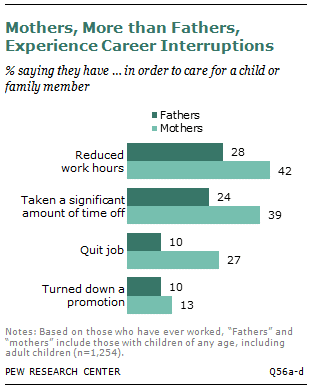On Equal Pay Day, key facts about the gender pay gap
April 9, 2014
Pew ResearchCenter – Today marks “Equal Pay Day,” the date that symbolizes how far into the new year the average American woman would have to work to earn what the average American man did in the previous year. With a new executive order issued today, President Obama and Democrats are hoping to peg the gender wage gap as a major issue ahead of the 2014 elections. This week, Senate Democrats also plan to again bring forward the proposed “Paycheck Fairness Act,” a bill that aims to eliminate the pay gap between female and male employees.
Both men and women see a need for moves such as this – 72% of women and 61% of men said “this country needs to continue making changes to give men and women equality in the workplace,” according to a Pew Research Center survey last fall.
According to the White House, full-time working women earn 77% of what their male counterparts earn. This means that women have to work approximately 60 extra days, or about three months, to earn what men did by the end of the previous year. However, our own estimate, which is based on hourly earnings of both full- and part-time workers, finds women earn 84 percent of what men earn. Based on our estimate, it would take approximately 40 days, or until the end of February for women to earn what men had by the end of last year.
But for young women, the wage gap is even smaller – at 93 percent – meaning they caught up to their same-aged male counterparts by roughly the last week in January of this year.
As our video explains, the estimated 16-cent pay gap today has narrowed from 36 cents in 1980. Back then, the average woman would have had to work approximately 90 days, roughly into the beginning of May, in order to catch up with men’s earnings from the year before.
In spite of its narrowing, the gender pay gap persists. Why is this? In our survey, women were more likely to say they had taken career interruptions to care for their family. And research has shown that these types of interruptions can have an impact on long-term earnings. Roughly four-in-ten mothers say they have taken a significant amount of time off from work (39%) or reduced their work hours (42%) to care for a child or other family member. Roughly a quarter (27%) say they have quit work altogether to take care of these familial responsibilities. (Fewer men say the same. For example, just 24% of fathers say they have taken a significant amount of time off to care for a child or other family member.)
Even though women have increased their presence in higher-paying jobs traditionally dominated by men, such as professional and managerial positions, women as a whole continue to work in lower-paying occupations than men do. And some part of the pay gap may also be due to gender discrimination –women are about twice as likely as men to say they had been discriminated against at work because of their gender (18% vs. 10%).
via On Equal Pay Day, key facts about the gender pay gap | Pew Research Center.

